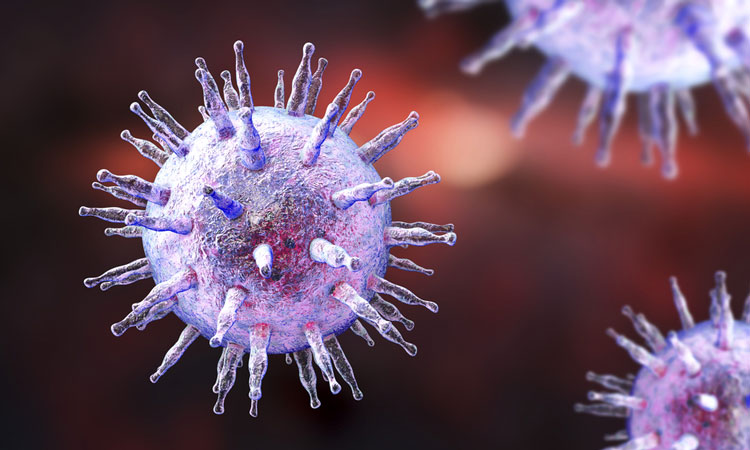Epstein-Barr virus: new targets for vaccine design and treatment
Posted: 13 March 2024 | Drug Target Review | No comments yet
A lab generated monoclonal antibody prevented EBV infection and EBV lymphomas in rodent models and could have future clinical applications.


Researchers from the National Institute of Allergy and Infectious Diseases (NAID) have studied the interactions between two lab-generated monoclonal antibodies (mAbs) and an essential Epstein-Barr virus (EBV) protein, gp42. This found targets that could be used for treatment and vaccine design for this very common virus.
Around 95 percent of the global population is infected with EBV. The virus resides in the body permanently, normally in B lymphocytes, as well as cells lining the throat and pharynx. Sometimes, EBV can lead to B-cell cancers, including Burkitt, Hodgkin and non-Hodgkin lymphomas, or gastric or nasopharyngeal cancers. Also, EBV infection was recently shown to significantly increase the risk of developing multiple sclerosis. There is no vaccine to prevent EBV infection, nor a specific treatment.
For the new study, the scientists examined the viral protein gp42, which EBV must use to infect B cells. Theoretically, EBV infection and persistence would be prevented by a vaccine or antibody-based treatment capable of blocking gp42’s ability to bind to or fuse with B cells. The team generated two gp42-specific mAbs, A10 and 4C12, and used X-ray crystallography to visualise how they interacted with gp42. The crystal structures showed that the two mAbs interacted with distinct, non-overlapping sites on gp42. A10 blocked the site on gp42 required for receptor binding, while 4C12 interfered with a different site that is involved in membrane fusion.
The team then tested A10, 4C12 and several other mAbs in mice for their ability to prevent EBV infection and EBV lymphomas. Almost complete protection against EBV infection was provided by mAb A10, and none of the mice developed lymphoproliferative disease or lymphoma. However, nearly all the mice treated with other mAbs became infected and some developed lymphoproliferative disease or lymphoma.
The mAb A10 could have clinical applications if future studies show it to be safe and effective in humans, especially in people who have not been infected with EBV; those with immunodeficiency conditions; or people receiving transplants. These groups are at risk of developing severe or fatal cases of EBV disease during their first encounter with the virus. The team added that the investigational monoclonal antibody could be used prophylactically to prevent or better control EBV infections in such cases.
It was also noted that identification of the vulnerable sites on gp42 also paves the way to designing future vaccines that could elicit antibodies against one or both newly described sites.
This study was published in Immunity.
Related topics
Animal Models, Antibodies, Antibody Discovery, Targets, Therapeutics, Vaccine development, Virology
Related conditions
Epstein-Barr virus (EBV), Immunodeficiency
Related organisations
National Institute of Allergy and Infectious Diseases (NAID)








